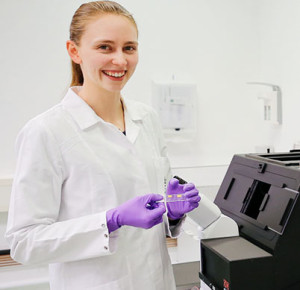Dortmund, 16th September 2022
It is no longer a secret that women and men exhibit different symptoms during a heart attack. It is also clear that adverse drug reactions occur almost twice as often in women as in men. However, the role of sex as a biological factor in the development of adverse drug reactions is poorly understood. One thing is for sure — there is a significant difference between the sexes in the expression of a gene important for drug metabolism.
What do sex-specific differences generally mean for health research? What role do they play in applied basic research, for example in understanding the genesis of diseases or in the search for new therapeutic approaches? The editors asked five ISAS scientists to comment on sex-specific aspects in their fields of research..

It is well-known that some medications work differently in women and men. This has to do, for example, with differences between the sexes in terms of drug intake, distribution, and effects. When transferring research results into practice, it is important to aim at including an equal number of male and female subjects or patients in the studies.
In my research group, we start at the very beginning, with the genesis of cardiovascular diseases. Once we have identified the disease mechanism, the first thing is to develop what is called a targeting strategy or therapeutic strategy. Depending on the question, we usually study them in one sex first before expanding the studies.
Prof Dr Kristina Lorenz Director of Translational Research Head of Cardiovascular Pharmacology

Artificial intelligence (AI) might be able to detect a sex difference when evaluating microscopic biomedical images if such a difference exists, for instance, from a pathological perspective. For example, certain tissues from male donors might look different under the microscope than tissues from female donors. AI can compare the images and detect, for example, differences in the size of glands in tissues from females and males.
Dr Jianxu Chen Head of AMBIOM - Analysis of Microscopic BIOMedical Images

Sex-specific mass spectrometric analysis of proteins is important to our search for biomarkers for progression and therapy control (progression markers) in neuromuscular diseases. Despite many similarities between women and men at the biological level, there are some differences that may be critical in the search for biomarkers. For example, women and men differ not only in terms of their sex hormones, but also, for example, in the activity of their serotonergic systems, which are involved in the regulation of almost all brain functions, and in the level of the stress hormone, cortisol, in saliva.
Some neuromuscular diseases also exhibit differences between the sexes. For example, the hereditary disease Duchenne muscular dystrophy affects men almost exclusively.
The reason for this is because women with the mutated gene on one X chromo-some can compensate for this genetic defect with their second X chromosome. A gender-specific analysis is necessary when searching for biomarkers for some neuromuscular diseases, however, at the same time, it limits the sample size and especially in rare diseases, the small number of patients presents us with challenges.
Dr Andreas Hentschel Research Associate Translational Analytics

Rheumatoid arthritis (RA) primarily affects women, accounting for about 75 per cent of patients. Consequently, female sex hormones such as oestrogen and progesterone play a particularly important role in the development of this autoimmune disease. In most patients, RA occurs during menopause, when progesterone and oestrogen are deficient. Accordingly, several studies also demonstrate the positive effects of hormone replacement therapies in women with postmenopausal RA. However, as said, RA is not an exclusively female disease; about a quarter of those affected are male. Research has shown that RA in men is associated with low testosterone levels in the blood. Testosterone has immunoregulatory and anti-inflammatory functions, so male sex hormones also appear to have an important influence on the development of RA.
In our work, we take these sex differences into account and focus primarily on female mice to study RA in our animal models. To more closely evaluate the influence of sex-related differences in the development of the disease, we then additionally compare the findings of female mice with those of male animals. We also include both female and male patients in our studies when analysing human samples.
Prof Dr Anika Grüneboom Head of Bioimaging

It is true that sex affects the development of neurodegenerative diseases. One of the »simple« explanations to why women have a greater tendency to develop Alzheimer’s disease (AD) lies in the fact that women live, in average, five years longer than men, and age is the main risk factor for the development of AD. In addition, women are more prone to autoimmune diseases and these inflammatory processes could be triggers for plaque formation. As for Parkinson’s Disease, while men do have a one and a half to twice fold bigger tendency to develop PD, women have a much worse and faster disease progression. The reasons for that remain unclear.
Taking both sexes into consideration when per-forming experiments is becoming increasingly appreciated, particularly among scientists studying aging and age-induced diseases.While this is not always easy to interpret and analyse due to inherent physiological differences among sexes, it may provide a key to understanding how these processes develop, on a molecular level, and maybe lead to some targeted drug design.
Dr habil. Miloš Filipović Head of ERC-Sulfaging








